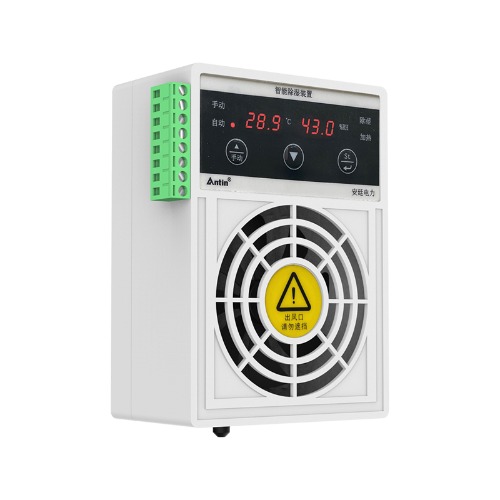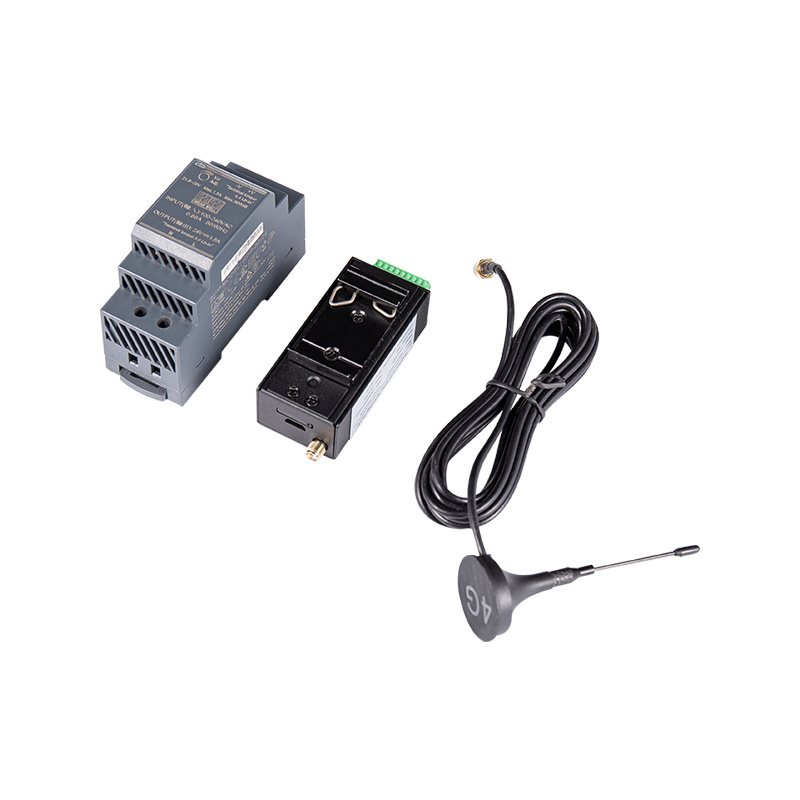The Ultimate Guide to Cabinet Dehumidifiers: Protecting Your Valuables from Moisture Damage
Understanding the Need for Cabinet Dehumidifiers
In environments where sensitive equipment, documents, or materials are stored, controlling humidity is not just a matter of comfort but of preservation. Excess moisture in the air can lead to a host of problems, including mold growth, corrosion, warping, and the degradation of electronic components. This is where specialized solutions like cabinet dehumidifiers come into play. Unlike whole-room dehumidifiers, these units are designed to create and maintain a specific, dry microclimate within an enclosed space, such as a server rack, gun safe, museum display case, or storage cabinet. They are the first line of defense for protecting invaluable and often irreplaceable assets from the insidious effects of dampness.
The principle behind their operation is crucial to understand. These compact devices work by drawing in the moist air from within the cabinet, passing it over a cold surface (in refrigerant types) or a desiccant material (in desiccant types) to extract the water vapor, and then releasing the dry, warm air back into the enclosure. This continuous cycle ensures that the relative humidity level inside the cabinet remains within a pre-set, safe range, typically between 40% and 50%, which is widely considered ideal for preventing moisture-related damage. The compact form factor is a key advantage, allowing them to be installed in tight spaces without interfering with the contents of the cabinet.
Choosing to implement a cabinet dehumidifier is a proactive measure. It is far more cost-effective to prevent damage than to attempt restoration or replacement after the fact. For instance, the cost of a dehumidifier pales in comparison to the potential loss from a corrupted server holding critical data or a rare historical document destroyed by mold. This guide will delve deep into the world of cabinet dehumidifiers, exploring key features, benefits, and how to select the perfect unit for your specific needs, including insights on low energy consumption cabinet dehumidifier options and small space cabinet dehumidifier solutions.
Key Benefits of Installing a Dedicated Cabinet Dehumidifier
The installation of a purpose-built dehumidifier for your enclosed storage spaces offers a multitude of advantages that extend beyond simple moisture removal. These benefits underscore the importance of this specialized technology in both domestic and industrial settings.
Superior Protection for Sensitive Contents
The primary and most significant benefit is the unparalleled protection offered to the contents of the cabinet. Whether it's a collection of precision tools, important paperwork, musical instruments, or ammunition, each of these items has a very low tolerance for humidity. For example, metal objects begin to oxidize and rust when exposed to moisture levels above 50% RH. Paper and wood absorb moisture from the air, leading to warping, pages sticking together, and providing a fertile breeding ground for mold and mildew. A cabinet dehumidifier creates a stable, dry environment that halts these destructive processes in their tracks, significantly extending the lifespan and preserving the condition of your valuables.
Energy Efficiency and Targeted Operation
One of the most compelling reasons to choose a cabinet dehumidifier over dehumidifying an entire room is the dramatic increase in energy efficiency. Whole-room dehumidifiers or running an air conditioner constantly are incredibly energy-intensive processes because they are tasked with treating a large volume of air, much of which doesn't require conditioning. A cabinet dehumidifier, by contrast, only needs to manage the micro-environment of the cabinet itself. This requires significantly less power to achieve and maintain the desired humidity level. This targeted approach means lower electricity bills and a reduced carbon footprint, making a low energy consumption cabinet dehumidifier an economically and environmentally smart choice for long-term operation.
Prevention of Condensation and Electrical Failures
In electronic enclosures like server racks or network cabinets, temperature fluctuations can lead to the formation of condensation on internal components. This condensation is a severe hazard, potentially causing short circuits, corrosion on circuit boards, and catastrophic data loss. A cabinet dehumidifier actively prevents the air inside the enclosure from reaching its dew point, thereby eliminating the risk of condensation entirely. This ensures the reliable and continuous operation of critical electronic systems, preventing costly downtime and repairs.
Choosing the Right Cabinet Dehumidifier: A Detailed Comparison
Selecting the optimal cabinet dehumidifier requires careful consideration of several factors, including the size of the enclosure, the ambient conditions, and the specific needs of the items being protected. Not all units are created equal, and understanding the differences is key to making an informed decision.
Desiccant vs. Refrigerant Technology
The two main technological approaches to dehumidification are refrigerant (compressor-based) and desiccant. Each has its own set of advantages and ideal use cases, particularly concerning operating temperature.
Refrigerant dehumidifiers work by cooling air to a temperature below its dew point, causing moisture to condense on evaporator coils, which is then collected. They are generally more energy-efficient in warm, humid conditions. However, their efficiency drops significantly in cooler environments (typically below 15-18°C or 60-65°F), and they can even become inoperative as the coils may freeze.
Desiccant dehumidifiers use a hydrophilic material (like silica gel) to absorb moisture from the air. The moist air is passed over a rotating desiccant wheel, which traps the water molecules. The wheel is then regenerated (dried out) using a small heater, allowing the process to continue. The key advantage of desiccant models is their effectiveness across a wide range of temperatures, especially in cool and cold environments where refrigerant models struggle. This makes a desiccant cabinet dehumidifier for electronics an excellent choice for server rooms that are kept cool or for use in unheated spaces like garages or basements.
The following table outlines the core differences:
| Feature | Refrigerant (Compressor) Dehumidifier | Desiccant Dehumidifier |
|---|---|---|
| Operating Principle | Cools air to condense moisture. | Absorbs moisture using a desiccant material. |
| Efficiency in Low Temperatures | Poor; performance declines and may freeze. | Excellent; performs consistently in cold environments. |
| Energy Consumption | Generally lower in warm, humid conditions. | Typically higher due to the energy needed for regeneration. |
| Ideal Use Case | Warm, humid climates; heated spaces. | Cool/cold environments; unheated spaces; electronics cabinets. |
Critical Selection Criteria
Beyond the core technology, several other factors must be evaluated to ensure you choose a model that is capable of meeting your demands.
Capacity and Cabinet Size
Capacity, usually measured in pints per day (PPD) or liters per day, indicates how much moisture the unit can remove under specific conditions. It is the most critical specification to match with your application. An undersized unit will run constantly without ever achieving the target humidity level, wasting energy and wearing out prematurely. An oversized unit might short-cycle (turn on and off frequently), which is also inefficient and can lead to inadequate moisture control. Carefully calculate the volume of your cabinet (in cubic feet or meters) and consider the ambient humidity levels of the room it's located in. Many manufacturers provide sizing guides to help you select a model with the appropriate capacity. For those with limited room, a small space cabinet dehumidifier with a compact design but adequate capacity is essential.
Drainage Options
Dehumidifiers collect extracted water into an internal reservoir or tank. For cabinet models, which are often installed in hard-to-reach places, manually emptying a tank is impractical. Therefore, most quality cabinet dehumidifiers offer a continuous drainage option. This involves connecting a small hose (often provided) to a drain port on the unit, allowing the condensate to be pumped or gravity-fed away to a drain or outside. This is a crucial feature for hassle-free, long-term operation.
Control and Monitoring Features
Modern cabinet dehumidifiers come equipped with sophisticated controls. Look for features such as:
- Adjustable Humidistat: Allows you to set your desired humidity level precisely.
- Visual Indicators: LED lights for power, active dehumidification, and tank full/fault conditions.
- Auto-Restart: The unit will automatically resume operation at its previous settings after a power outage.
- Timer Function: Allows you to program operating cycles.
These features enhance usability and ensure the unit operates exactly as needed without constant supervision.
Optimal Placement and Installation for Maximum Efficiency
Simply purchasing a high-quality dehumidifier is not enough; its correct placement and installation are paramount to its performance. Improper installation can render even the best unit ineffective.
Strategic Positioning Within the Cabinet
The goal is to facilitate optimal airflow throughout the entire enclosed space. The dehumidifier should be positioned where it can best circulate dry air. In a tall server rack or storage cabinet, mounting the unit near the bottom is often recommended. As the dehumidifier draws in air, removes moisture, and exhausts warmer, drier air, this air will naturally rise due to convection, helping to circulate the dry air upwards through the cabinet. Ensure that the intake and exhaust vents on the dehumidifier are not obstructed by cables, equipment, or other items. There should be a clear path for air to move freely into and out of the unit.
Sealing the Environment
A cabinet dehumidifier can only effectively control the environment of a sealed space. If the cabinet has large gaps, open vents, or is constantly being opened, moist air from the outside will continuously infiltrate, overwhelming the dehumidifier. Before installation, inspect the cabinet for any unnecessary openings. Use foam sealing tape around the door edges to create an airtight seal. For necessary cable ports, use brush panels or cable grommets that minimize air exchange. This step ensures the dehumidifier is only treating the air inside the cabinet and not fighting a losing battle against the outside environment. For a waterproof cabinet dehumidifier, this also helps in maintaining its own integrity if installed in a particularly damp location.
Electrical and Drainage Considerations
Plan the routing of the power cord and any drain hose carefully. They should be routed in a way that does not interfere with the cabinet door or its contents. If using a drain hose, ensure it has a consistent downward slope to allow for gravity drainage; if that's not possible, some models include a condensate pump for upward drainage. Always plug the dehumidifier into a reliable power source, and consider using an Uninterruptible Power Supply (UPS) for critical applications to ensure it continues running during a power failure, which is when temperature and humidity control can be most vulnerable.
Addressing Common Challenges and Maintenance
Like any appliance, cabinet dehumidifiers require periodic maintenance to operate reliably over their lifespan. Being aware of common issues and their solutions will help you avoid problems.
Routine Maintenance Tasks
Regular maintenance is simple but essential:
- Filter Cleaning: Most units have a small air filter to prevent dust from entering the core components. This filter should be checked every few months and cleaned according to the manufacturer's instructions (usually by vacuuming or rinsing). A clogged filter restricts airflow, drastically reducing efficiency.
- Coil and Housing Cleaning: For refrigerant models, the evaporator and condenser coils can accumulate dust over time. Gently vacuuming these annually can maintain peak performance. Wipe down the exterior of the unit to remove dust.
- Drainage Check: Periodically inspect the drain hose for clogs or kinks that could prevent water from flowing out. If using a condensate pump, ensure the reservoir is clean.
A well-maintained silent operation cabinet dehumidifier will not only perform better but will also last longer.
Troubleshooting Frequent Issues
If the unit seems to be underperforming, run through a quick checklist:
- Is the cabinet properly sealed? Check for air leaks.
- Is the ambient room humidity extremely high? The unit may be working correctly but is simply sized for normal conditions.
- Is the air filter clean?
- Are the intake or exhaust vents blocked?
- For refrigerant models in cold spaces: Is the environment too cold for the unit to operate effectively? You may need to switch to a desiccant model.
Understanding these basics will empower you to keep your system running smoothly and protect your investments for years to come.






